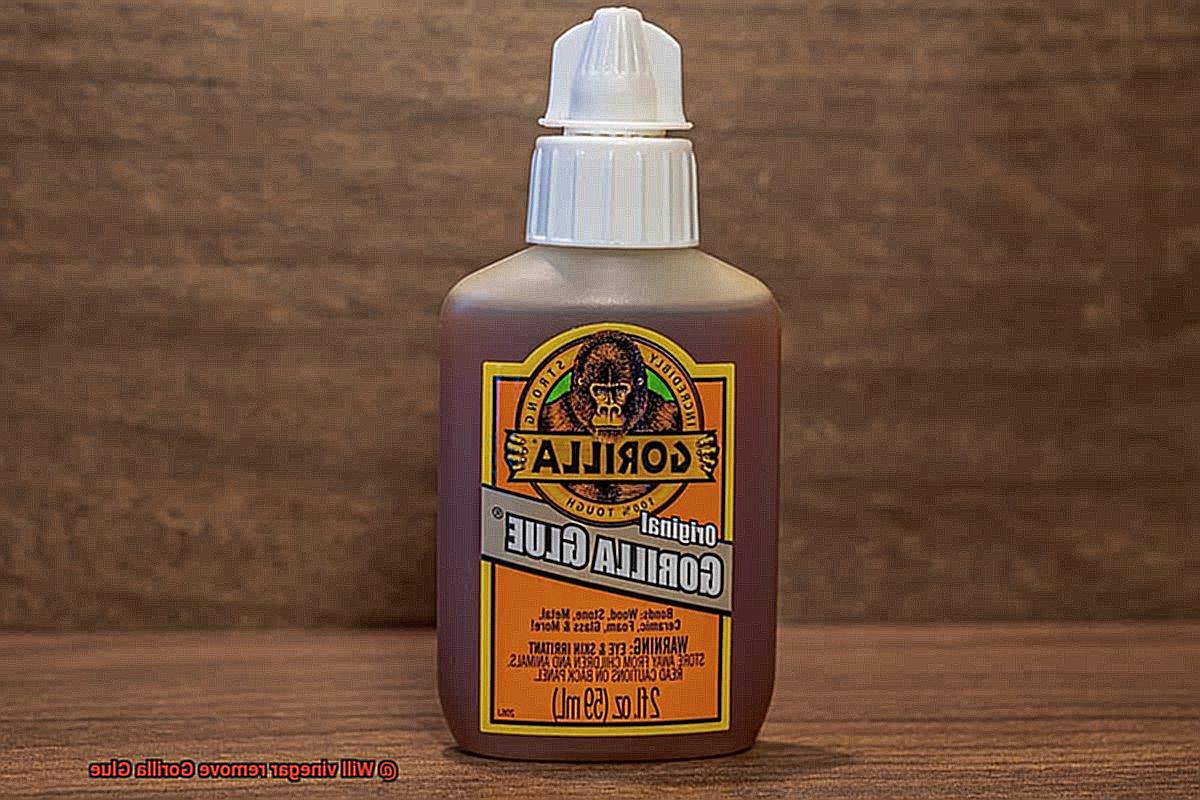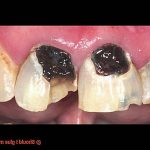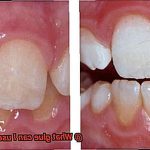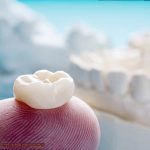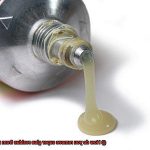Gorilla Glue is a superhero among adhesives, known for its remarkable bonding power that can fix almost anything. But sometimes, even superheroes make mistakes – like when you accidentally apply too much glue or it ends up in an unintended area. That’s where removal methods come in handy, and one of the most popular ways to remove Gorilla Glue is by using vinegar.
If you’re a DIY enthusiast or simply someone who has experienced the frustration of Gorilla Glue mishaps, you might be wondering if vinegar can truly dissolve this mighty adhesive. Well, the answer is yes – but don’t expect it to be easy. Gorilla Glue is waterproof and incredibly strong, so removing it requires some serious elbow grease and patience.
In this article, we’ll dive into whether vinegar can effectively remove Gorilla Glue, exploring the science behind how its acidity dissolves glue and offering tips on how to make the process smoother. We’ll also cover alternative methods if vinegar doesn’t do the trick. So whether you’re trying to unstick your fingers or fix a DIY disaster, keep reading to find out if vinegar is the solution to your Gorilla Glue woes.
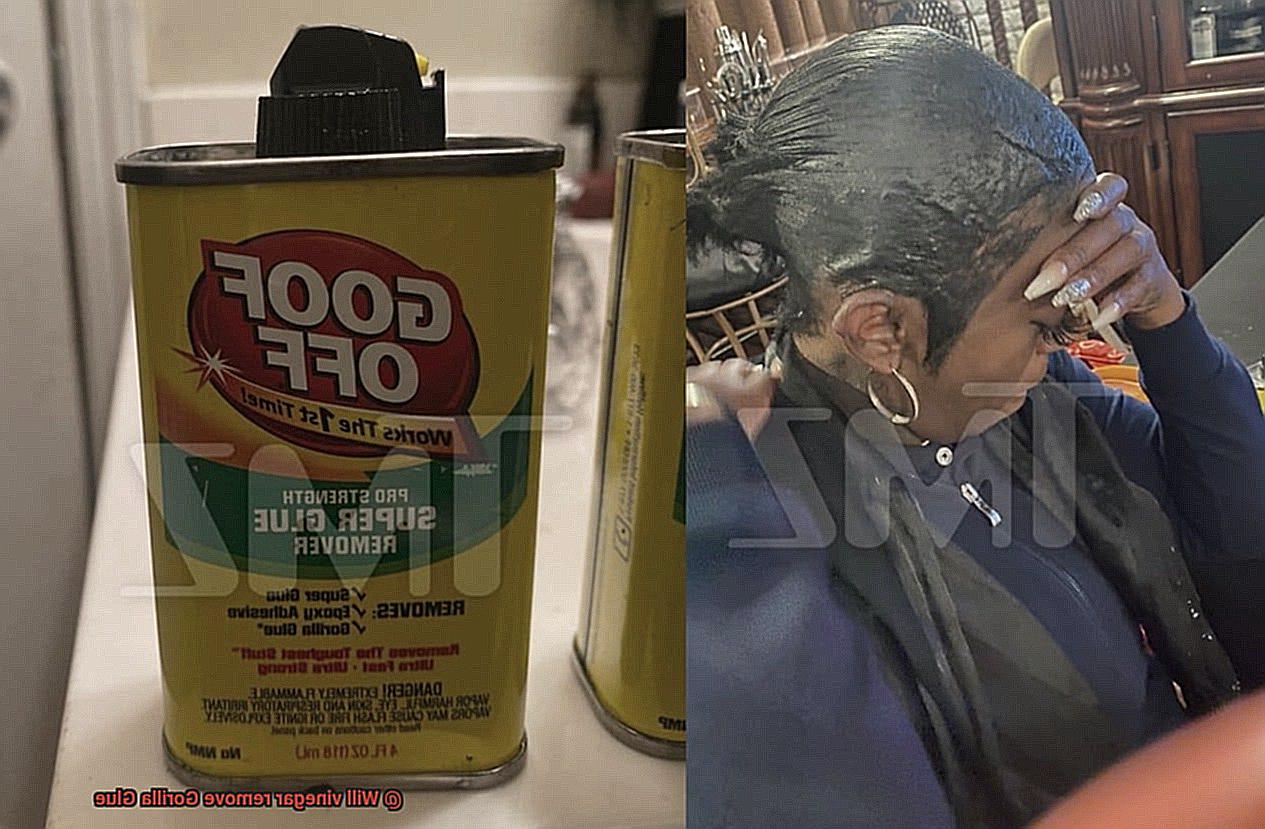
a. What is Gorilla Glue?
Contents
Look no further than Gorilla Glue. Since its introduction to the market in 1999, this polyurethane-based adhesive has earned a reputation as one of the strongest and most durable adhesives available.
What sets Gorilla Glue apart is its incredible versatility, capable of bonding a variety of materials such as wood, metal, ceramic, stone, and even some plastics. The glue’s unique foaming effect allows it to expand and fill any gaps or voids in the material being bonded, resulting in a secure and unshakeable bond.
However, with great strength comes great difficulty in removal. This is where vinegar comes into play as a potential solution. Vinegar is an acidic substance that can break down the bonds of certain adhesives, including Gorilla Glue.
To use vinegar as a removal method, warm up white vinegar (but don’t boil it) and apply it directly onto the area with Gorilla Glue using a cloth or sponge. Let it sit for 15-30 minutes before gently scraping away the glue with a plastic scraper or toothbrush.
But be cautious – vinegar may not work on all surfaces and can damage certain materials like wood or fabric. It may also require multiple attempts and may not completely remove all traces of the glue. If vinegar doesn’t work, other options like acetone or sanding may be necessary.
Why is Gorilla Glue Difficult to Remove?
Its exceptional bonding strength is unmatched, but it also means that removing it once it has cured can be a daunting task. So, why is Gorilla Glue difficult to remove?
Firstly, the glue’s chemical composition is a major factor in its formidable bonding strength. Gorilla Glue contains a moisture-activated polyurethane formula that expands as it cures. This expansion allows the glue to seep deep into the surface, creating a bond that is hard to break. The foam-like texture that results from this expansion only adds to the challenge of removing it.
Secondly, Gorilla Glue is waterproof and heat-resistant, which makes it highly resistant to most solvents used for dissolving adhesives. Even soaking or heating up the glue may not be enough to soften or dissolve it, making removal much more challenging than with other types of adhesives.
Lastly, Gorilla Glue’s adhesive properties make it difficult to remove without causing damage. The glue creates a molecular attraction between the bonded surfaces, making separation without damaging them an uphill task.
What is Vinegar and How Does it Work?
Vinegar is a true jack-of-all-trades when it comes to household items. It’s a diluted solution of acetic acid and water, typically containing about 5-8% acetic acid, making it a versatile item that can be used for cooking, cleaning, and even as a natural remedy for various ailments. But did you know that vinegar can also help you remove Gorilla Glue?
Gorilla Glue is notoriously difficult to remove, but vinegar can help break down its bond. This powerful adhesive creates an unbreakable bond thanks to its moisture-activated polyurethane formula. Vinegar works by breaking down the bonds between the molecules in the glue, ultimately weakening its hold on surfaces. However, it may not be effective in removing cured or dried Gorilla Glue.
Apart from its adhesive-removing properties, vinegar is also known for its ability to kill bacteria and viruses, making it a popular choice for cleaning surfaces. It’s an all-natural cleaning solution that’s tough on grime and dirt but gentle on your home and family. Additionally, vinegar can be used as a natural fabric softener and as a remedy for heartburn and digestive issues.
How to Use Vinegar to Remove Gorilla Glue
Say goodbye to stubborn Gorilla Glue with the help of vinegar. This household item is not only versatile for cleaning and removing stains, but it can also be an effective solution for removing Gorilla Glue from surfaces. Here are the steps you need to follow:
Gather your materials
You will need a clean cloth, white vinegar, and warm water.
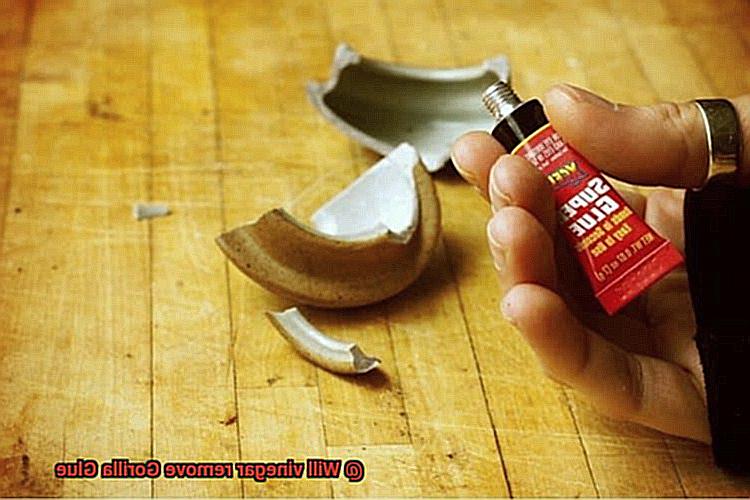
Soak the cloth in vinegar
Dip the cloth in white vinegar and wring out any excess liquid.
Apply to the affected area
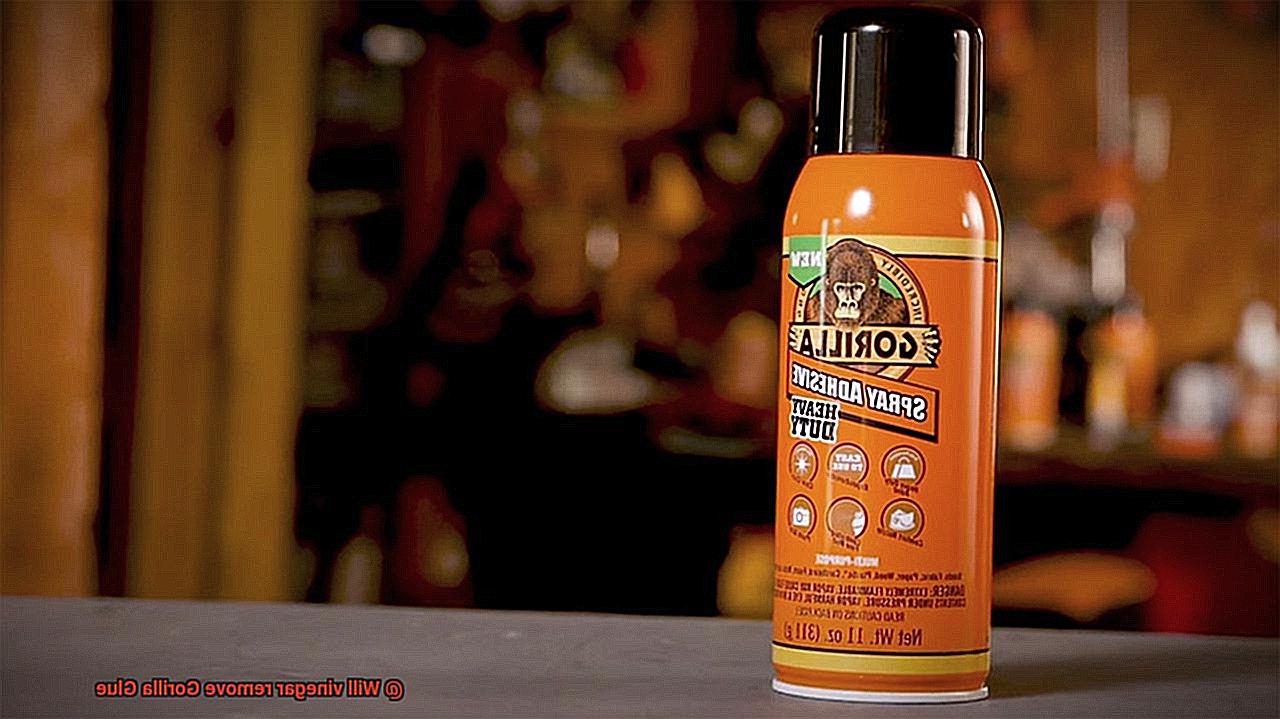
Place the vinegar-soaked cloth on the area with Gorilla Glue and let it sit for 15-30 minutes.
Scrape off the glue
Once the glue has softened, use a scraper or plastic knife to gently remove as much glue as possible.
Repeat if necessary
If there is still residue left, repeat steps 2-4 until all of the glue is removed.
Clean up
Once all of the glue has been removed, clean the area with warm water and soap to remove any remaining vinegar residue.
It’s important to keep in mind that vinegar may not work for all types of surfaces or adhesives. Therefore, always test a small, inconspicuous area first before applying vinegar to a larger area. Abrasives or harsh chemicals should never be used in an attempt to remove Gorilla Glue as they may damage the surface or be harmful to your health.
Potential Risks of Using Vinegar on Certain Surfaces
We know that vinegar is a versatile and cost-effective solution to remove those pesky Gorilla Glue stains. However, it’s crucial to understand the potential risks involved in using vinegar on certain surfaces.
Firstly, it’s important to note that vinegar is a mild acid that can cause discoloration or staining on porous surfaces such as carpets, fabrics, and even some metals. Before using vinegar on any surface, always test it on a small, inconspicuous area to avoid any permanent damage.
Another risk of using vinegar is that it can compromise the structural integrity of certain materials. For example, if used on wood or laminate flooring, vinegar can damage the finish and cause warping or buckling over time. Similarly, applying vinegar on painted surfaces may strip off the paint and leave behind unsightly patches.
Furthermore, vinegar can be hazardous in specific situations. If you’re removing Gorilla Glue from an electrical appliance or device, using vinegar may potentially harm the wiring and create a fire hazard. Additionally, if you have sensitive skin or respiratory issues, using vinegar can cause irritation and worsen these conditions.
To sum up, while vinegar can be an effective solution for removing Gorilla Glue stains, it’s essential to be aware of the potential risks involved and take necessary precautions. Always test a small area first, avoid using vinegar on delicate surfaces like fabrics or painted walls, and exercise caution when working with electrical appliances or devices.
Alternative Methods for Removing Gorilla Glue
Gorilla Glue is a formidable adhesive that can bond just about anything together. However, the real challenge comes when you need to remove it. While vinegar may be a popular go-to for removing Gorilla Glue stains, it’s not always the most effective solution. But don’t worry, there are several alternative methods that can help you remove Gorilla Glue safely and effectively from various surfaces.
Acetone is one of the most effective methods for removing Gorilla Glue. Found in many nail polish removers, acetone can dissolve the glue and make it easier to remove. However, take caution as acetone can damage certain surfaces. So, make sure to use it with care.
Another option is using rubbing alcohol or isopropyl alcohol. These substances can also dissolve Gorilla Glue and are safe to use on most surfaces. Simply apply the alcohol to the affected area and let it sit for a few minutes before attempting to remove the glue.
If you don’t have acetone or rubbing alcohol on hand, hot soapy water can also help loosen the glue and make it easier to remove. Just be prepared to put in some elbow grease as this method may require some scraping or sanding to fully remove the glue.
It’s important to note that each surface and situation may require a different approach when it comes to removing Gorilla Glue. Whether you’re dealing with delicate fabrics or tough materials like wood or laminate flooring, there’s a solution out there that can help you safely remove Gorilla Glue without causing any damage.
Li3_SpYup18″ >
Conclusion
To sum up, Gorilla Glue is a formidable adhesive that can stick almost anything together. However, once it has cured, removing it can be a daunting task. Luckily, vinegar is a popular household item that can dissolve Gorilla Glue with its acidic properties that break down the glue’s molecular bonds. But don’t be fooled; removing Gorilla Glue with vinegar can be tricky and may require multiple attempts.
It’s worth noting that vinegar may not work on all surfaces and could potentially damage certain materials like wood or fabric. So, it’s always best to test a small area before applying vinegar to a larger area. Moreover, vinegar isn’t the only solution for removing Gorilla Glue; acetone or rubbing alcohol are also effective alternatives.
When working with Gorilla Glue, safety comes first. Avoid using harsh chemicals or abrasives that may harm surfaces or pose health risks.

